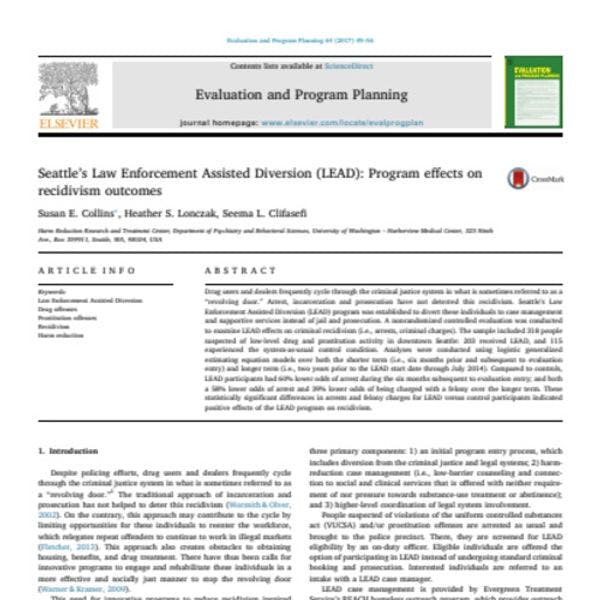Seattle’s Law Enforcement Assisted Diversion (LEAD): Program effects on recidivism outcomes
By Susan E. Collins, Heather S. Lonczak, Seema L. Clifasef
Drug users and dealers frequently cycle through the criminal justice system in what is sometimes referred to as a “revolving door.” Arrest, incarceration and prosecution have not deterred this recidivism. Seattle’s Law Enforcement Assisted Diversion (LEAD) program was established to divert these individuals to case management and supportive services instead of jail and prosecution. A nonrandomized controlled evaluation was conducted to examine LEAD effects on criminal recidivism (i.e., arrests, criminal charges). The sample included 318 people suspected of low-level drug and prostitution activity in downtown Seattle: 203 received LEAD, and 115 experienced the system-as-usual control condition. Analyses were conducted using logistic generalized estimating equation models over both the shorter term (i.e., six months prior and subsequent to evaluation entry) and longer term (i.e., two years prior to the LEAD start date through July 2014). Compared to controls, LEAD participants had 60% lower odds of arrest during the six months subsequent to evaluation entry; and both a 58% lower odds of arrest and 39% lower odds of being charged with a felony over the longer term. These statistically significant differences in arrests and felony charges for LEAD versus control participants indicated positive effects of the LEAD program on recidivism.
